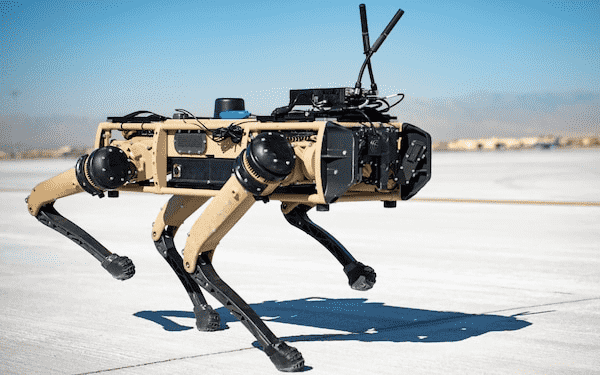The United States wants to deploy robot dogs on its border with Mexico. Or when black-mirror comes a little closer to reality.
The United States Department of Homeland Security announces that its Customs and Border Protection Service will now use robot dogs to monitor the country’s southwestern border, shared with Mexico.
Hostile environments for humans
According to the press release, the use of these four-legged machines will make it possible to reallocate part of its staff to other activities. ” The southern frontier can be an inhospitable place for man and animal, and that’s exactly why a machine can excel there. commented Brenda Long, Head of the Science and Technology Department.
The announced objective is to delegate tasks which can be dangerous to these robots to avoid human losses, in an area which sees a good number of illegal goods passing through: trafficking in human beings, drugs, contraband objects, firearms and even weapons of mass destruction.
Moreover, the terrain is not very suitable for humans, between deserts and mountains with extreme climatic conditions, high heat and high humidity.
All-terrain robot dogs
The robot dogs are produced by the company Ghost Robotics. You may have already heard about it in our columns since we recently reported to you that this company had equipped its robot-dogs with weapons capable of firing up to 1,200 meters in the dark thanks to an optical zoom of up to 30x and a thermal camera.
For the specific needs of border surveillance, Ghost Robotics has developed a new version of its four-legged robots. Weighing 45 kilos each, they are capable of traversing all types of natural terrain, including sand, rocks and hills, as well as man-made environments such as stairs.
Ghost Robotics explains that it is essential for robots to have “legs” (in this case, rather legs) to be so versatile, track-based movement systems being much more limited.
Source: US Homeland Security

13